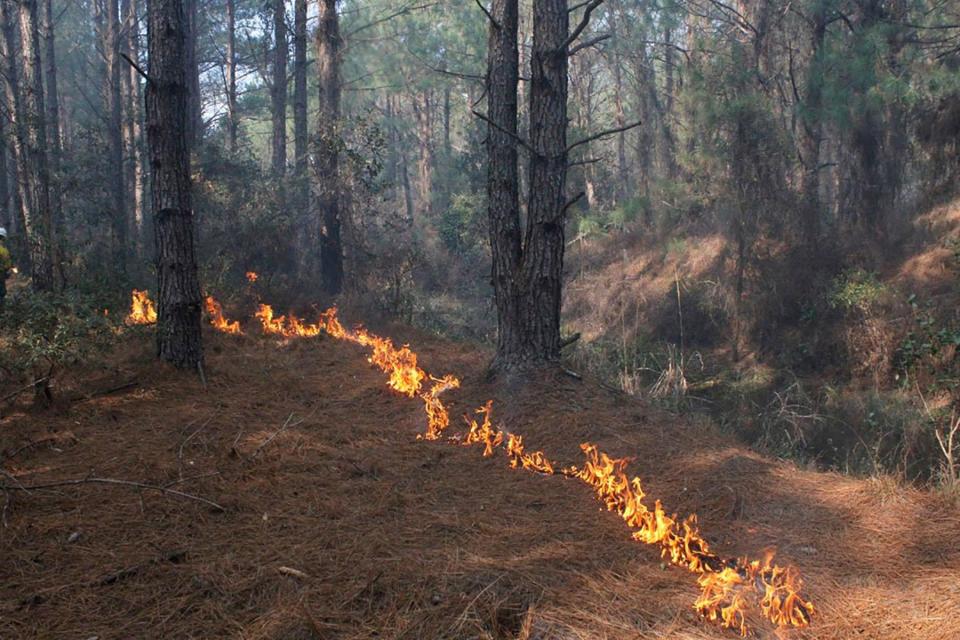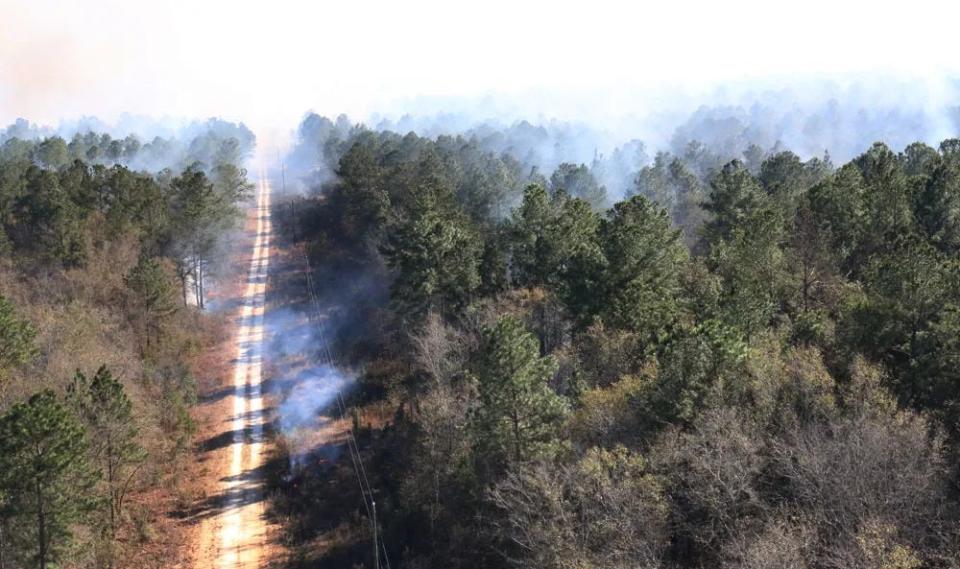Don’t sweat prescribed burns, they're imperative to a healthy Coastal Georgia environment
Every year during the winter and spring months here on the coast we will encounter the familiar smell of smoke in the air.
For some, even myself at times, this is met with an immediate wrinkle of the nose and a feeling of being inconvenienced. Before we get too upset about the smoke, let’s do our best to understand what it is and why it is happening. It might be that some insight and appreciation for the reasons behind the smoke might turn your frown upside down.
We will start with a short history lesson. Longleaf pine was one of the most important commodities for counties along the coast for many some 300 years ago. While loblolly and slash pine plantings have moved into the timber production scene in a big way, longleaf pine is still an important part of our heritage and ecosystem still today.
Not just a strictly Savannah problem: What do you do about Spanish Moss and dry conditions?
More:Coastal Georgia weather, sandy soil impact lawn health
Spending time outside? Here is how to identify and get rid of poison ivy
Longleaf pine forests are the habitat of choice for turkey, quail, deer and numerous other birds that nest specifically in these unique trees. History lesson aside however, the acreage of longleaf that exists today is greatly diminished from its former glory.

As a matter of fact, roughly 3% of its former coverage across the Southeast United States remains today. Therefore, it is imperative that we help this species persist so that we don’t lose an important part of our history.
That brings us to the smoke in the air we welcome this time of the year. In order for longleaf pine, seeds to grow they first need to be exposed to fire in order to germinate. Furthermore, low intensity ground fires are a crucial factor in maintaining a healthy ground layer ecosystem in longleaf forests. Prescribed fires, also referred to as prescribed burns, are the method used to bring about the restoration and renewal of the ecosystems.
What you might not have known is that prescribed fires are a safe way to reduce the risk of dangerous wildfires that can breakout when conditions are ripe for them during the summer.
That's So Savannah: What is the oldest known tree in Savannah?
Fort Stewart has a large amount of longleaf pine acreage and utilizes prescribed burns to take care of the forest every year. Fort Stewart also has an endangered species program and healthy longleaf pines are extremely important to many species in the forest such as the gopher tortoise and pileated woodpecker. The soldiers that train out on the grounds reap the benefit from these fires as well, so it is really a great situation for everybody involved; Fort Stewart does a great job of making sure everything, and everyone is safe.

So during the coming months when the smell of smoke fills the air think about all the good that these prescribed burns do for a diminishing resource and ecosystem and appreciate that we live in an area where these unique habitats still exist.
If you have any questions about prescribed burns, I encourage you to contact the GA Forestry Commission in your county or myself at the County Extension office in Bryan or Liberty County.
Richard Evans is the agriculture and natural resources agent for Bryan/Liberty County Cooperative Extension. Reach him at 912-653-2231 or uge3029@uga.edu (Bryan County) or 912-876-2133/uge3179@uga.edu (Liberty County).
This article originally appeared on Savannah Morning News: Prescribed burns in Georgia are imperative to a healthy environment

